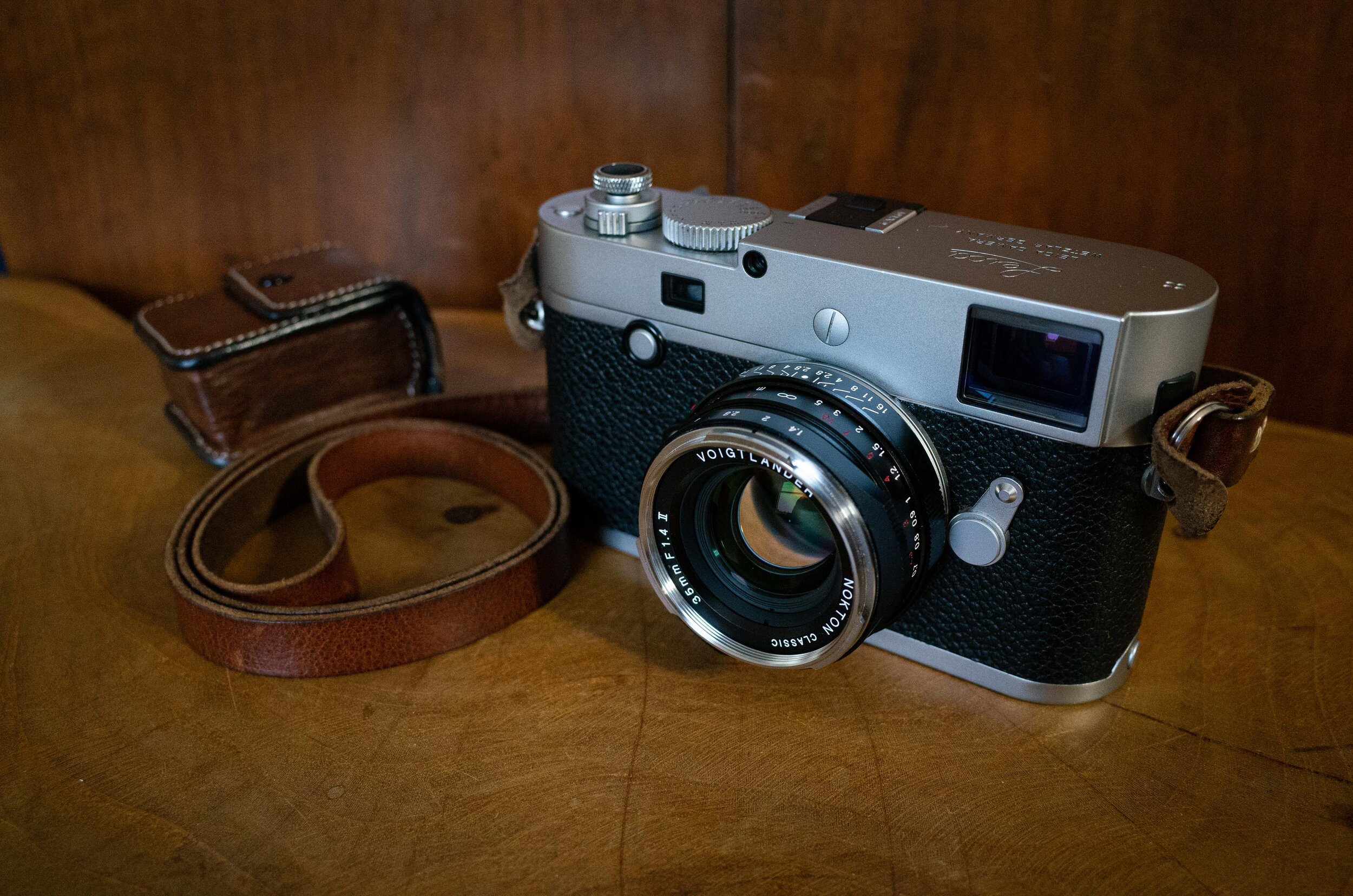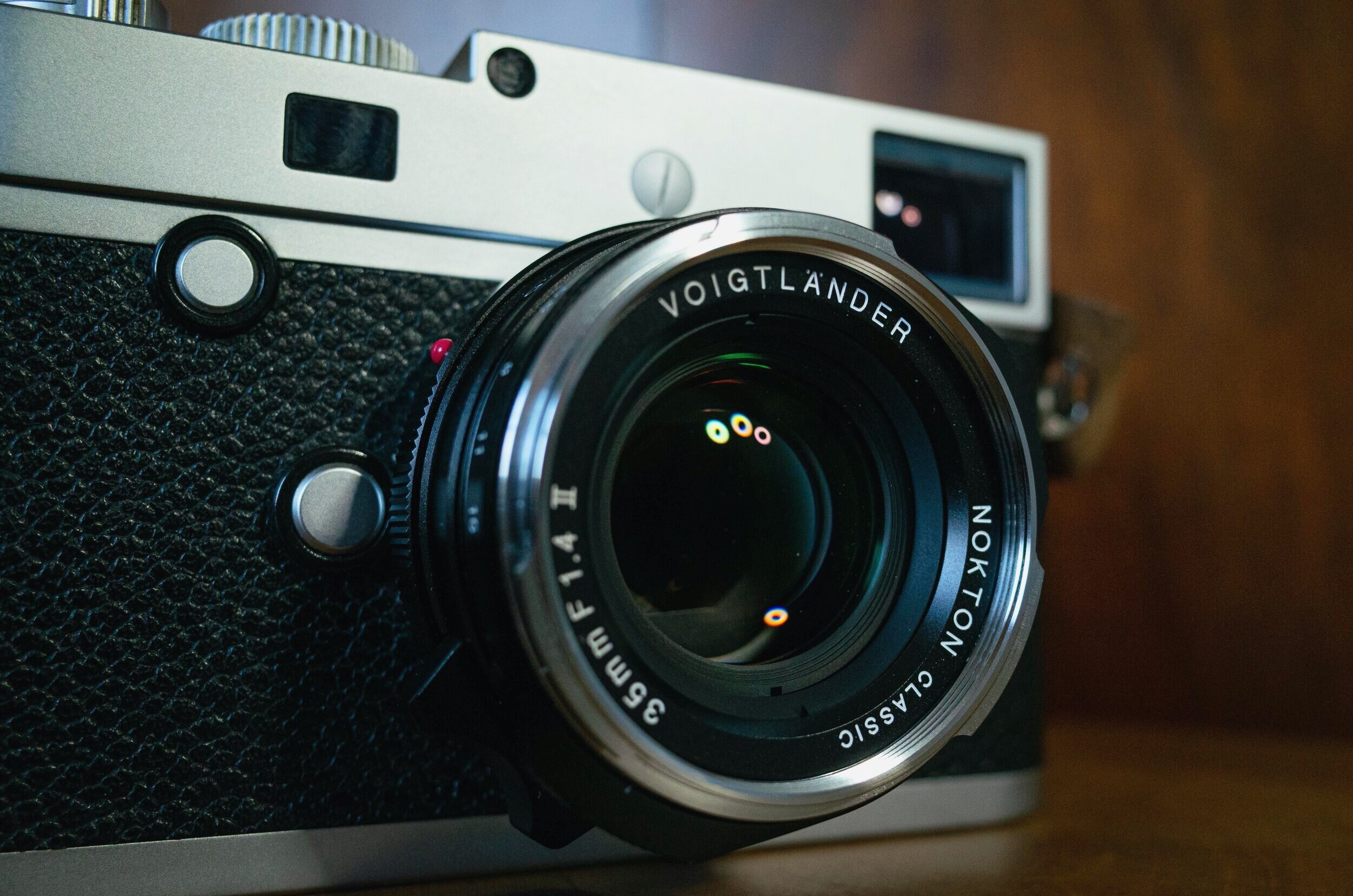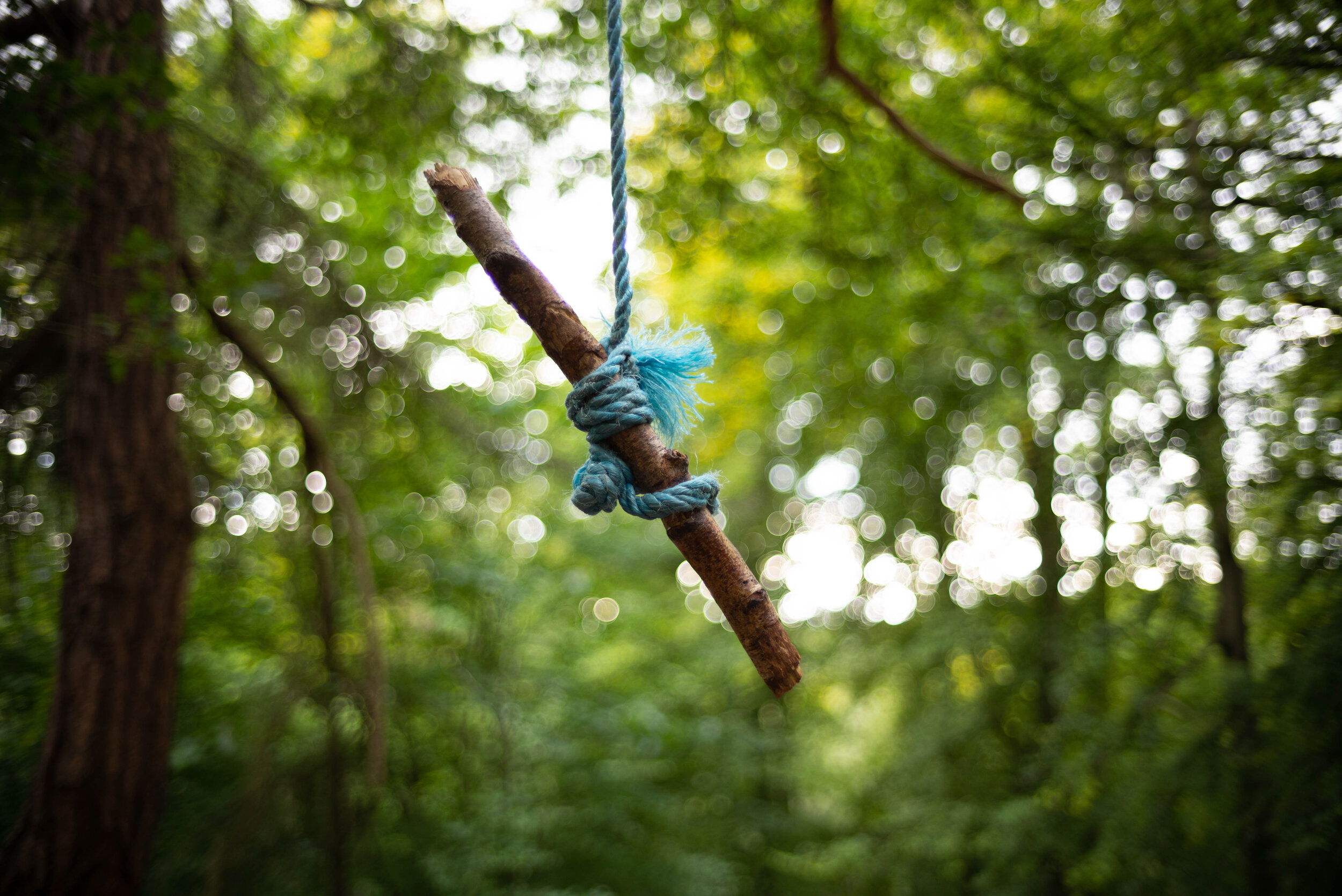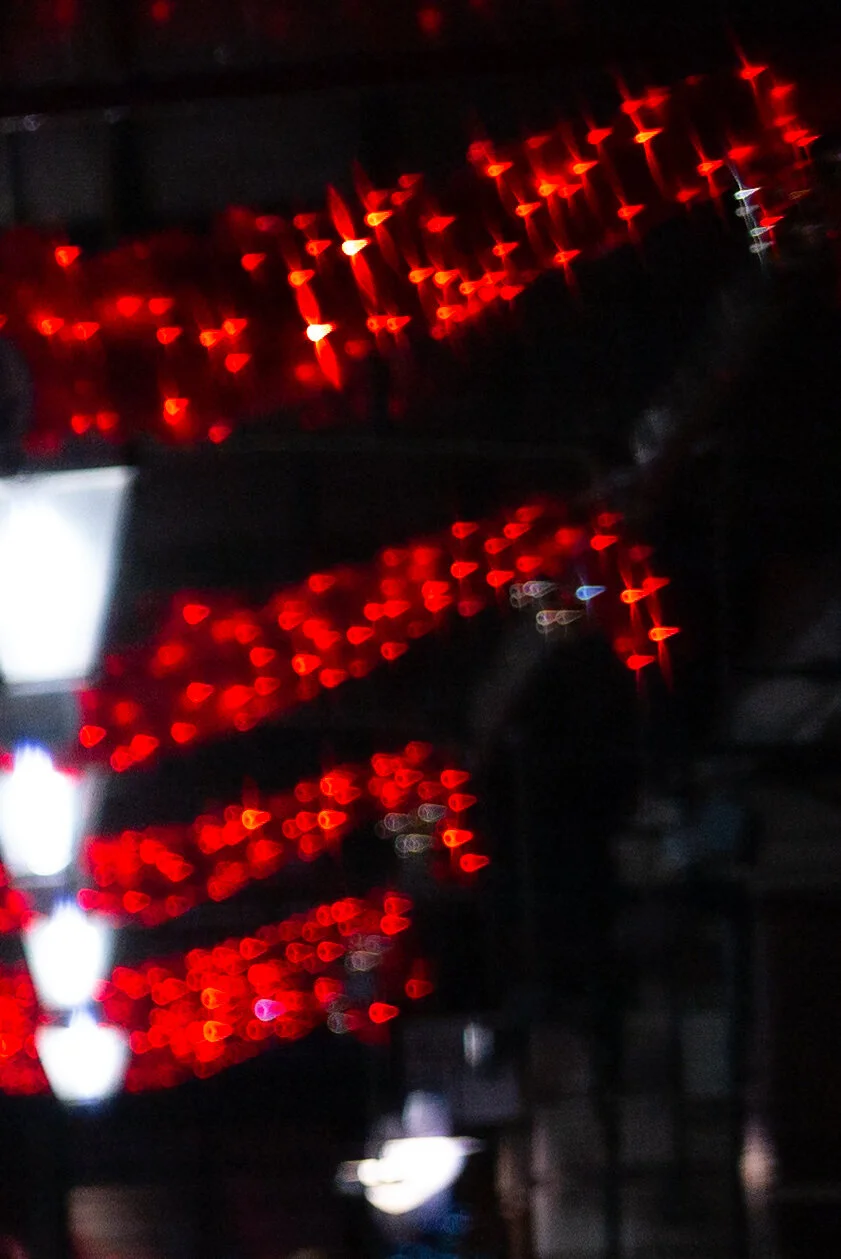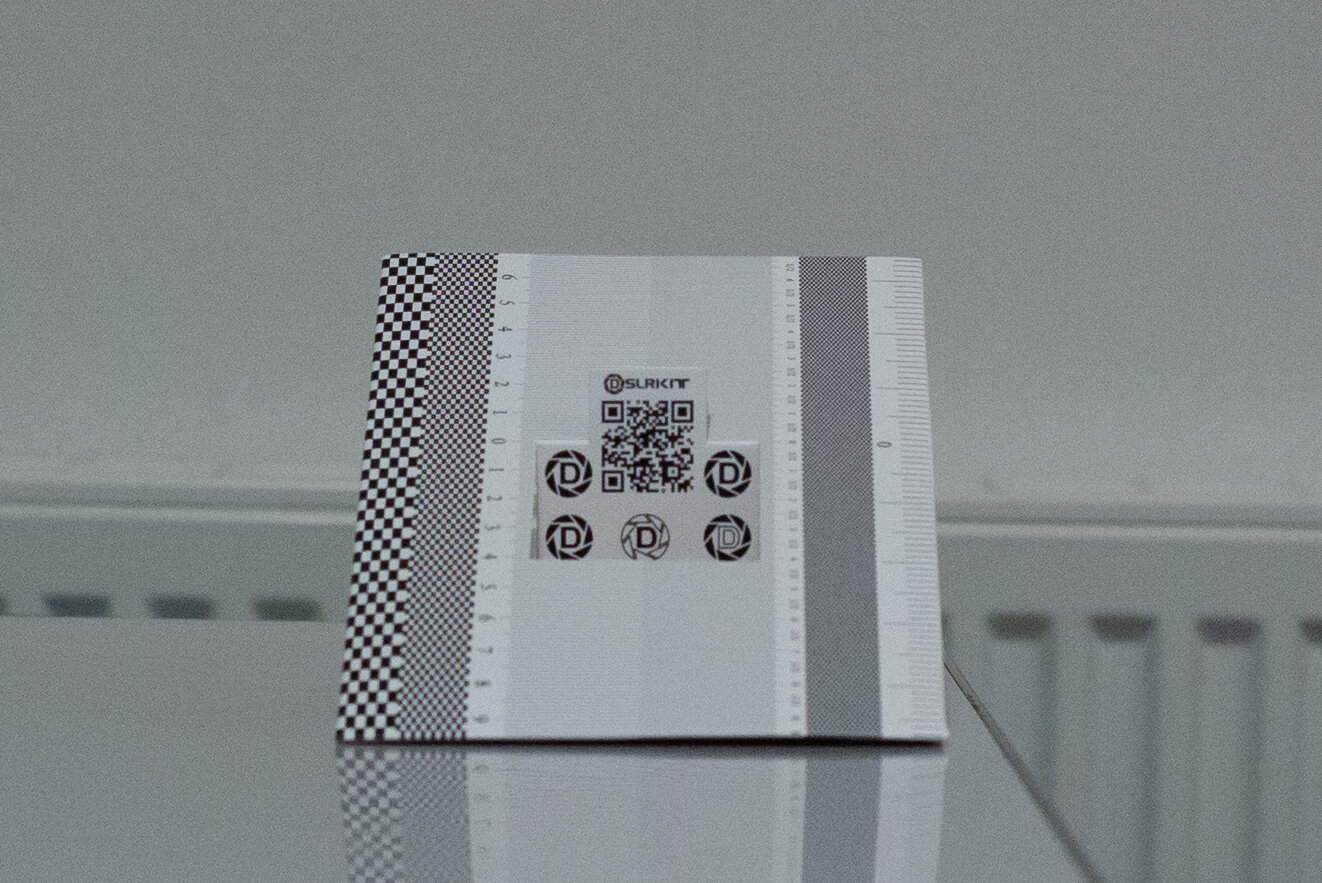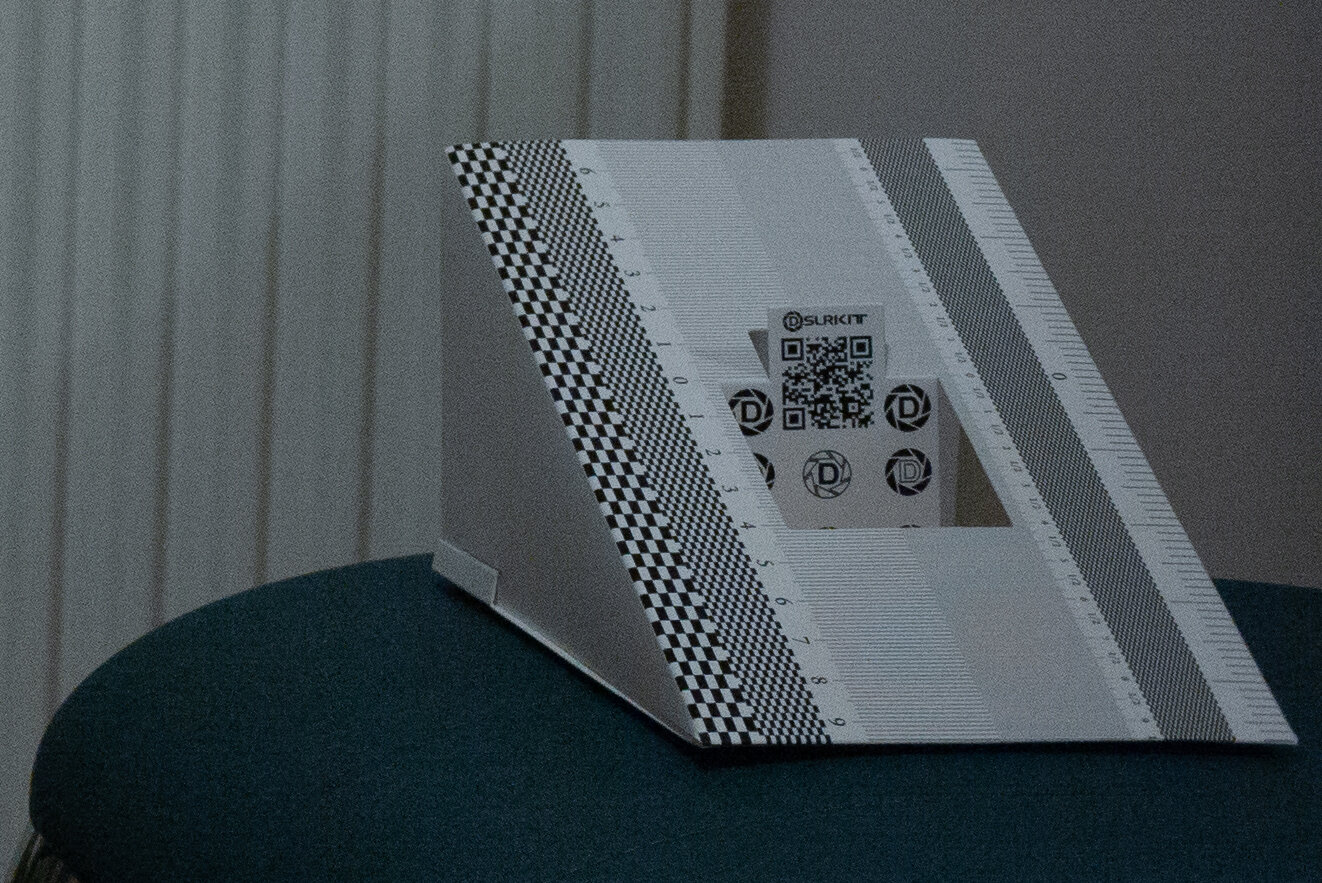Voigtlander Nokton Classic 35mm F1.4 II VM review
The Voigtlander Nokton Classic 35mm F1.4 II VM is the revised version of a lens widely known in the rangefinder world, the Voigtlander Nokton Classic 35mm F1.4, which came in MC (multicoated) and SC (single coated) versions. The lens reviewed here comes in the same flavours and the one in my possession is the MC. The VM in the designation indicates a Leica M mount. This lens has almost the same spherical and symmetrical design of its predecessor, but features an anomalous partial dispersion glass element, which the previous version lacked: Voigtlander claims that this allowed them to greatly reduce the focus shift issue that plagued the older design. I will tell you how much this is true in a future post, in which I will be comparing the two versions directly. Stay tuned!
The lens costs £576 here in UK, and comes without its LH-6 vented lens hood, which costs £54 but I highly recommend you buy. Why? It is a bayonet mounted hood, a vastly better design than any clip-on Leica hood (rant coming in future post!) and easy to get on/off. It’s small and functional and even great looking.
Lastly, before getting on with the review, I want to point out that I shoot this lens uncoded on my Leica M240, and there is no hint of colour vignetting - I think this is huge for Leica M users!
Let’s get it out of the way: I think this is a great little lens. Period. I’ll tell you why.
HOW DOES IT HANDLE?
The handling and build are a very important aspect for me, and boy the Nokton 35mm 1.4 II delivers! Just holding it in the hand it’s small, compact, dense, built like a tank. The looks are great, although not fundamental for me, and the very controversial silver filter ring/hood bayonet doesn’t bother me at all.
I always use a filter on the lens, and a hood only if it rains. I never had an issue with reflections in windows or more perceived flare because of the silver colour.
This lens has a focusing tab, and that’s the only way to focus it. There are a lot of supporters for this focusing method and, although I tend to prefer a ribbed/scalloped ring, I have to agree that for zone focusing and quick focus changes in the field it really rocks - on one condition: you have to build the muscle memory for the position of the tab at different focus distances!
I tend to shoot it mostly using zone focusing, setting it at F8 and 3 meters, and racking focus quickly at 1 meter for close-ups without looking at the lens or rangefinder, and it works beautifully. I will write a post on this, although it’s a well known technique among street photographers.
Back to the lens: focusing is smooth and nicely dampened, aperture stops nice and crisp, stiff enough not to move accidentally in normal use or in the bag.
On the camera the balance is perfect, it almost feels like there is no lens mounted weight wise, and this is wonderful. I use no hood normally, but I have its original LH-6 bayonet hood and it still is very small even with the hood on.
Lastly, an important feature of the Nokton 35mm 1.4 II on a rangefinder camera: there is no viewfinder blockage at all. Lovely!
With the hood on
RIGHT, DID YOU SHOOT ANY IMAGES WITH IT?
All right, I did actually shoot a lot with it. Do I have complaints? Nope. Zilch. Nada. I love it. Is it technically perfect then? Far from it!
I bought the Voigtlander 35mm 1.4 II fully aware of its shortcomings, after comparing it to another 6 (six!) 35mm lenses, 5 Voigtlanders (3 Ultrons and 2 Noktons) and one Zeiss (Biogon), from F1.2 to F2. By the way, it was a process of elimination after having owned and used all of them at one point or another apart from one, which I briefly tried in the shop - the new Ultron F2 Vintage, which I’m very curious about.
So: is the Nokton 35mm 1.4 II clinically sharp wide open? Nope. Does it glow wide open? Yep. Does it have razor sharp corners at wider apertures? Nope. Does it have purple fringing wide open? Yep. Does it have barrel distortion? Yep. Is the bokeh nervous wide open? Yep. Does it flare? Well, actually, not that much!
Now, all these answers would make you think that the Nokton 35mm 1.4 II sucks! But in reality, all of these do not give me any second thoughts about keeping this lens as my only 35mm, because any of the issues are inflated in my opinion, especially in everyday shooting.
Let’s look at a few shots, from wide open to closed down, of a subject that has no artistic value at all but show sharpness, purple fringing, bokeh and contrast all in one:
And some crops:
Now, let’s take into account that the camera chose to expose slightly differently for each shot, and I haven’t spent time trying to equalise the brightness. This difference will most likely be due to the vignetting levels changing with aperture. But I think these shots show very well the center sharpness, the bokeh character, the purple fringing and the contrast levels. Do not fret about focus shift, I shot these with the electronic viewfinder (EVF) to avoid any variation, also because we are close to minimum focusing distance. And there is a section in this review dedicated just to focus shift!
For me the lens is already plenty sharp wide open, but sharpness is not my main worry - in real life shooting it doesn’t matter so much as the content. Closing down it becomes tack sharp pretty quickly, I stop looking at how sharp it is at F2 already: more than enough for any of my applications!
The purple fringing is certainly quite visible, and is still there at F2, but completely gone at F4. I honestly have never noticed it in thousands of shots taken with the lens, and I do use the wider apertures. It really depends on what you want to use it for: back-lit portraits? Probably you need a better corrected lens there to avoid the fringing ruining the edges of your subject and their back-lit hair.
Contrast: definitely less wide open, but already much better at F2. In everyday use its colours and contrast are great, even wide open. Yes, there is a difference opening it up, but I find it still perfectly adequate for my purpose.
Out of focus rendition, or the fabled BOKEH! The Nokton 35mm 1.4 II has a “classic” bokeh, with a brighter ring around the highlight bokeh balls, and an overall “nervous” character. But wait a minute…I seem to have read the word “Classic” on the designation of the lens! How funny! So does that mean that this lens doesn’t render exactly like the ultramodern designs? Yep! It means exactly that! And again, I bought this lens fully aware of that. On the other hand, I hardly notice this peculiar character myself, because I rarely shoot wide open unless I need the light, and I don’t mind it in low light portraits. But I have to admit that this does change the aesthetics of the portrait and it can get distracting if there are many point highlights in the background - it is for you to decide if this is important to you. I can easily live with it, it rarely bothers me.
Take this picture: I have used the lens to its full potential for low light, wide open, and it gave me a beautiful image which I love.
The post-processing is really minimal, and mostly on the face apart from taking the exposure slightly down and actually adding some vignetting. Let’s see the face before and after developing:
I’m thoroughly happy with the result here. The post-processing took me a minute, and this because the subject’s face has such high contrast. What do you think? Notice a little flare blob on the worker’s overalls: I haven’t removed it because I limit my image modification to the very basics - I might still burn it a little to darken it.
Coma is another important issue on a low light lens. The next couple of pictures show centre sharpness and glow wide open together with coma in the edges and corners:
Some 100% crops, centre and corner - click to see them big:
The Voigtlander 35mm 1.4 II centre and off centre sharpness are quite good in my opinion, and these shots are wide open at F1.4. There is a bit of glow from any highlights in the plane of focus, but overall a great performance in my opinion for a lens with a “Classic” designation. Where the Classic character really rears its head is coma: I mean, look at that! That’s awful! No excuses here, I knew what I was buying but this is a drawback no matter where I come from. On the positive side for me is that I don’t shoot night landscapes on the go, so I can stop it down if I really need to and use a tripod. I can put up with such flaw given my expectations from the Nokton 35mm 1.4 II, also because otherwise it doesn’t disappoint at all. In the past I sold the Zeiss Biogon 35mm F2 ZM lens because of the awful coma wide open and because it never sharpened up in the corners, but I had wholly different expectations from that lens: I bought it expecting high performance, and I was probably looking at the wrong lens. If I want high performance I have to look elsewhere (I still want small size, so no big lenses!): keeping to the Biogon size there is the Voigtlander Ultron 35mm F1.7 VM, an aspherical design and a really good lens with a ridiculous ergonomic design for the sake of looks - review to come, stay tuned! If I wanted a smaller but still high performance lens I think I should look at the Ultron F2 Vintage (really curious about that one!) or Leica’s modern Summicron or Summilux options - but I haven’t tried any of those properly and the Leicas are shamefully expensive.
Talking about performance I just want to make a point here: let’s have a look again at that off centre detail, but this time at 200% magnification
200% - a pixel peeper’s wet dream!
I’ll say it again: this is 200% magnification, and it isn’t even a centre crop! The detail is all there, just some glow to mask it - a really good showing in my opinion!
Next is what gives the name to my blog: focus shift!
Here are a few shots with focusing charts, one dead centre, one in the lower right corner. First a couple of full frames of the setup, one wide open and one at F4, to show the amount of vignetting at these apertures:
Next, the centre and corner crops (I corrected slightly the exposure for the corner crops to compensate for vignetting at F1.4 and F2). Click to enlarge.
First thing: strong vignetting at full aperture, gone at F4 for any imaging purpose. The vignetting is absolutely fine for me, I love it. I often add some in my pictures if that helps drawing the eye to the subject.
Focus shift: I hope you are reading on a big screen, these are 100% crops and still it’s not easy to see it perfectly on smaller screens. Spot on wide open, very slight shift at F2, definitely there at F4, depth of field more than makes up for it at F8. In thousands of pictures shot with this lens I have yet to see it: the only way to see it is a controlled setting like this for me! In my opinion it’s a non issue with this lens. It’s another matter with its older sibling, the first version of the Nokton 35mm 1.4: focus shifting was visible in real life shooting in some situations. I will post a comparison between the two!
Corner sharpness: well, actually: this lens is pretty sharp in the corners at all apertures, less than centre but not far behind at wider apertures. Am I mad? Nope! What we see as unsharpness is field curvature! The extreme corners seem definitely blurry, but just look at the left front edge of the focusing chart in the corner: can you see that it is definitely sharper than the focusing target itself? The field is curving towards us at the corners, and I would be curious to see what happens in the very extreme edges and corners of the image had I thought of re-shooting the test with the corner chart slightly closer to me - how much does the field curve and how much is actually unsharp? Overall though at F8 the edges are tack sharp for me, I wouldn’t hesitate to shoot a landscape at this aperture and print it big. But that’s just me.
Flare is another sticking point according to a lot of reviewers of its older sibling, the Nokton 35mm 1.4 version I. Let’s have a look:
Bear in mind that I don’t use the hood unless it rains, to avoid water drops on the front element, so I give the lens a hard time. I the first picture I should have had a lens hood on, the sun hit the front element and created some veiling flare. A step forward in the shade and the flare is gone. In the third picture the strong light just out of frame created an annoying flare , but as soon as I moved ever so slightly the flare disappeared. I have no pictures made on purpose for flare testing, but this is real world usage. Not a big deal for me, although I love the flare resistance of newer designs.
Last, and a big one for the Voigtlander 35mm 1.4 II, something that drew a lot of criticism on the older version: distortion! Is there any? Oh yes! Doesn’t bother me though. I hardly see it in my pictures, I never felt the need to correct for it. How much is it? Let’s have a look:
The image on the left is as shot, on the right I applied some lens barrel distortion correction. I apologise for the poor subject, but I think it serves its purpose. As you can see, there is definitely some barrel distortion. Personally I was aware of it before buying and it doesn’t bother me at all, because I don’t shoot many brick walls, paintings or urban architecture with it. And if needed, which is extremely rare for me, correcting for it is a breeze. It really depends on your requirements and your shooting style.
ENOUGH OF THE GEEKY STUFF ALREADY! CONCLUSIONS?
A lens is made to shoot photographs, not test shots. And that is what I strive to do: shoot compelling images. I would have never shot any of the tests were it not for this review, but I know that these tests are of interest to a lot of people, and I respect that.
My take on the Voigtlander Nokton 35mm 1.4 II is this: I wanted a light, small and fast lens for my Leica M, and this lens fits the bill perfectly. Ergonomically it is perfect for me, it doesn’t get in the way of shooting and I am always happy to carry it around as a second lens because it’s so small and light. This is the lens that I almost exclusively used on my trip to India: I started with my trusty 50mm of course, but I quickly realised how busy and cramped all the spaces were and switched to the 35mm. After a few thousands shots, reviewing and editing every day, I never wished I had another lens. It performed exactly as expected and never held me back - on the contrary, the speed allowed me to shoot in areas that would have been difficult even with just one stop less of light: I don’t go over 3200 ISO on my Leica M240, and I have no image stabilisation. But it allowed me to shoot these two pictures within minutes:
The image on the left is slightly blurry from camera shake, but considering the incredible bustle and the fact I couldn’t stop at all I’m ok with it - look at the shutter speed. Had I not had F1.4 the picture would probably be too blurry. The second image should suffer badly from the lens distortion (so many are knocking its predecessor for it), but it is uncorrected here. Do you see any on that vertical line next to the subject? If you noticed any you are not looking at the picture, you are pixel peeping! Ha!
Throughout the India trip the camera was so unobtrusive with the Nokton 35mm 1.4 II mounted that it was always effortless to carry, and I always had it with me wherever we were going. That is a huge advantage in my book. The optical performance is not stellar like some of its more modern competitors, but given the price and the fact that it tells you beforehand that it is a Classic design my expectations were the right ones. And they were exceeded in actual use. All this makes the Voigtlander Nokton Classic 35mm F1.4 II VM a winner in my opinion.
Should we draw a list of pros and cons?
CONS
Coma - oh my!
Corner sharpness wider open (or is it field curvature?)
Glow around highlights on focus plane
Distortion
Purple fringing
A little flare
Lens hood has to be bought separately
PROS
Small and light
Very fast at F1.4
Great ergonomics
The perfect size for the Leica M
Good sharpness wide open
Great bayonet hood design
Really sharp to the corners at F8
Optically better than expected
Contrasty and great colours
Focus shift very slight
Good price
What do you think? Let me know in the comments!
Previous comments:
Nice review.
Flavio Admin forceofnature • 9 months ago
Thank you!
Nice photos
Flavio Admin ZEISSIEZ • 5 months ago
Thanks a lot!
Danny • 4 months ago • edited
Very nice review. I find the photos too saturated, is it your camera or the lens fault?
Flavio Admin Danny • 4 months ago
Thanks. I don’t understand where the fault would be? The saturation is just as I like it. The lens is not responsible, the camera is already fairly punchy with the colours from raw, but I like the look. Thanks for reading and taking the time to comment!
Thinkinginpictures • 2 months ago
Not good. I already have the 35mm 1.7 ultron and the 35mm 2.5 skopar plus I just bought the 40mm 1.4 MC. Now, I think I need this lens in my life.....
Flavio Admin Thinkinginpictures • 2 months ago
🤣how I understand you!
Thank you for an honest review, I have been hovering over several different lenses 35mm f1.7, 40mm f1.2 etc etc But your review and the stunning images has made my mind up, we are all too focussed on sharpness in the corners when in real life we never look at the corners !! A real life review - refreshing. C
Flavio Admin Colin Woolf • 12 days ago
Thank you Colin for the kind words. I am glad this review helps. I totally agree with you, we are chasing all that perfection in our gear and forgetting what the real point of photography is: to make compelling images. Only us photographers ever look so closely at those corners!
Colin Woolf Flavio • 8 days ago
Hi Flavio, I thought I ought to update you - in the end I thought the 1.4 was just too tiny and being a spontaneous photographer I worried about not being able to get the focus ring as quickly as I needed. So I went for the f1.7 Ultron - OMG. I have just shot some quick tests and it is way sharper than the Nikon 40mm Macro, sharper than the 21mm f3.4 Super Elmar Leica but a tad behind the Leica tele Elmar 135mm f4. AND I am not seeing any difference in the soft corners between the Leica 21mm f3.4 and the Ultron at f1.7 - despite the huge difference in wide open aperture values. So all in all a happy bunny. I like the way it handles too - I have spent 40+ years with the Nikon F2s in my hands, so this is a dream Thanks again for your posts, now bookmarked (the only photo page that is, on my computer :-)
Flavio Admin Colin Woolf • 7 days ago
Hello Colin, thanks for keeping me in the loop! I think you have chosen a fantastic lens. If you’re ok with the barrel design you’re in for a treat: I had that lens for a while, it’s an amazing optic. Enjoy it!
I will publish more, I just released a ridiculously long comparison of 50mm lenses for the Leica M system but I’ll look int 35mm again. Happy shooting!
Hi Flavio, very nice pictures and review! I just ordered the Nokton 40mm MC F1.4 to be used on a crop sensor (Fuji X-E3), so it will be a 60mm equivalent lens. Looking at your pictures it think it will work very well, and it will match perfect with a small camera body. Can't wait to test it. By the way, would you advise to use a hood and/or UV filter? Could that improve the image quality at F1.4, I mean for contrast? Thanks and good luck.
Flavio Admin Walter Kool
Hi Walter, thanks for your words! I tend to use my lenses without a hood unless it rains, but I do use high quality filters to protect them because I don’t use front lens caps either. I hardly ever find myself thinking that I should have used the lens hood. Flare is unpredictable and it appears at times, and the veiling flare variety can drop your contrast. But I don’t find it ever mattered enough for my photography.
I hope this helps!

